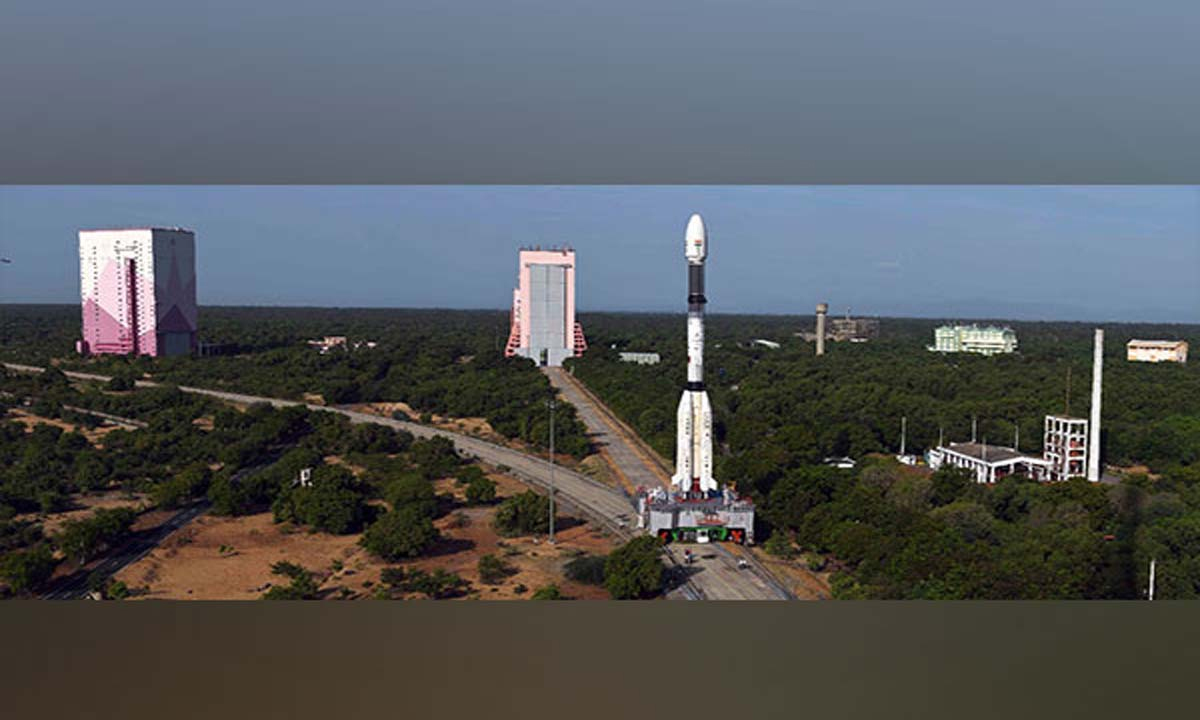
Pune (ANI): After the successful soft-landing of Chandrayaan-3 lander on the Moon, the Indian Space Research Organization (ISRO) is now working on two more lunar exploration missions.
Director, Space Applications Center (SAC/ISRO), Ahmedabad, Nilesh Desai said the two ambitious lunar missions – LUPEX and Chandrayaan-4 – aim to land the massive 350 kg lander on the 90-degree (dark side) side of the moon with precision landing. Is. Technology and sample return missions respectively.
Addressing a gathering at the 62nd Foundation Day celebrations of the Indian Institute of Tropical Meteorology in Pune on Friday, Desai said, “After the excitement generated after the Chandrayaan 3 mission, we are now going to work on the Joint Lunar Polar Exploration Mission this time.” Are.” Chandrayaan-3) we went up to 70 degrees, in the LUPEX mission we will go up to 90 degrees to observe the dark side of the Moon and land a huge rover there which weighs up to 350 kg, Chandrayaan-3 rover was only 30 kg so The lander will also be very big in this mission.”
Speaking about the Chandrayaan 4 mission, Desai said, “During the discussion about space programs after the success of Chandrayaan 3, Prime Minister Narendra Modi wanted us to face bigger challenges now.”
World’s first wooden satellite ‘Lignosat’ will be launched in 2024
“There are challenges with the new mission…hopefully we will be able to do it in the next 5 to 10 years,” the scientist said.
He said, “The Japanese have already launched a moon mission on September 7 that will do a precision landing, so this technology will also be used in this mission because we are trying to do a very challenging precision landing on the edge of a crater at 90 degrees.” Trying to.” “With a 350 kg rover with an exploration area of 1 km x 1 km (Chandrayaan 3 was 500 m x 500 m).”
He elaborated that while the Chandrayaan 3 mission was only for one lunar day, the upcoming mission will last for a duration of 7 lunar days, which is equivalent to about 100 Earth days… These are the challenges with new missions, so hopefully we will do so. Able to do this in the next 5 to 10 years”.
Scientist on Chandrayaan-4 mission said, “We have planned Chandrayaan-4 mission, it will be called lunar sample return mission, in this mission we will land and will be able to return with samples from the lunar surface… In this mission, landing Chandrayaan -3 but the central module will return to dock with the orbiting module which will then separate near the Earth’s atmosphere and the re-entry module will return with soil and rock samples. Moon…This is a very ambitious mission, hopefully in the next five to seven years we will complete this challenge of bringing samples from the surface of the Moon.”
He further said, “It will require two launch vehicles, so there will be two launches because four modules (transfer module lander module ascender module and re-entry module) will be launched, the RM and TM will be parked in lunar orbit and two Will be launched.” Go down so that the ascender module will separate from the lander module and collect the sample..We have all this on paper right now and we are working on various technologies to achieve this and this can be achieved with the capabilities available at ISRO. Could.”
Currently, ISRO is preparing for its next space venture in collaboration with the Japanese space agency, JAXA. It was dubbed LuPEX, or Lunar Polar Exploration.
On August 23, India took a major leap when the Chandrayaan-3 lander module successfully landed on the south pole of the Moon, making it the first country to achieve the historic feat and ending the disappointment over Chandrayaan’s crash landing. 2, four years ago. India became the fourth country after America, China and Russia to successfully land on the lunar surface.
After landing, the Vikram lander and Pragyan rover performed different tasks on the lunar surface, including detecting the presence of sulfur and other minor elements, recording relative temperatures and listening for activities around it.
Soon after the soft landing of Chandrayaan-3, India launched its first solar mission Aditya-L1 on September 2. So far in its journey, the spacecraft has undergone four Earth-bound maneuvers and one Trans-Lagrangian Point 1 Insertion (TL1I) maneuver. , all successfully. In the process, the spacecraft successfully escaped the Earth’s sphere of influence. (ANI)
















